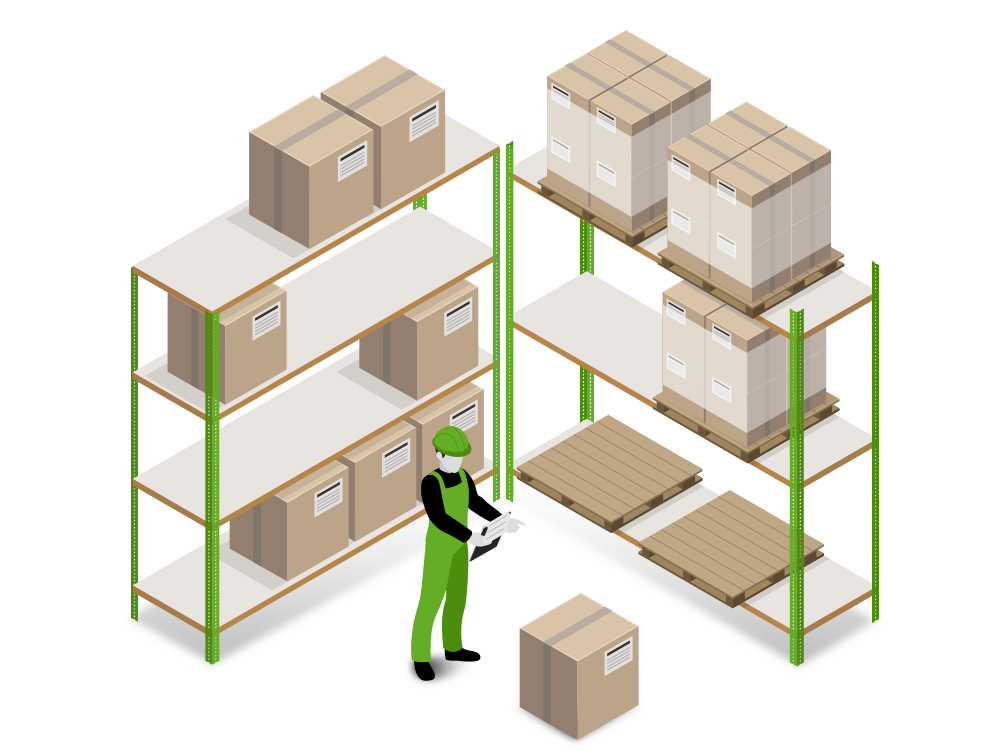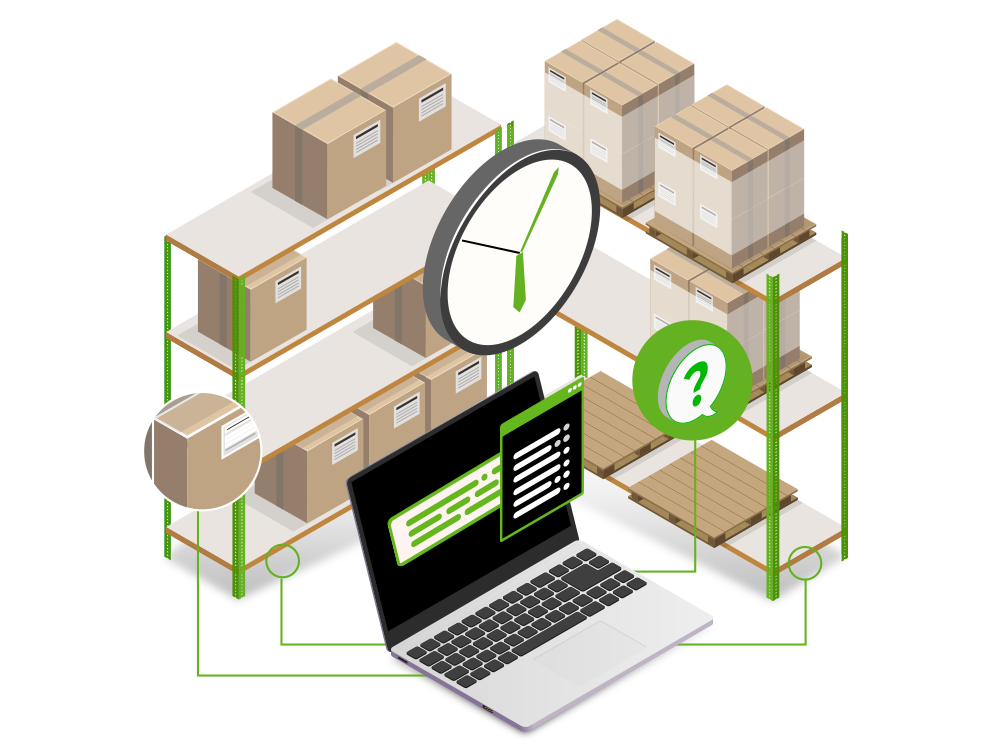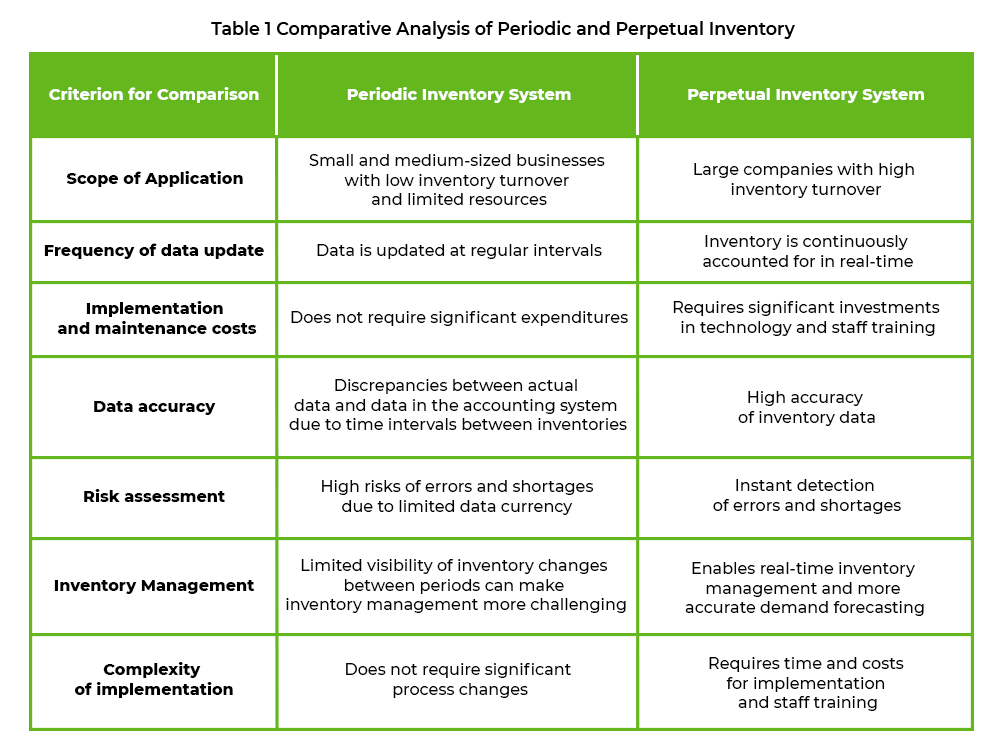Inventory management is an essential part of ecommerce business processes. It enables inventory management, prevents losses and optimizes business processes. Above all, entrepreneurs must decide what type of inventory system they choose for their business.
There are two primary types of inventory systems – periodic and perpetual. In this article, we will delve into them in detail, explain the periodic and perpetual inventory systems difference, and assist you in determining which method may be more suitable for your business.
- Periodic Inventory
- Perpetual Inventory System
- Comparative Analysis of Periodic and Perpetual Inventory Systems
- Solution for your business: what factors should be considered?
- Frequently Asked Questions
Periodic Inventory

The periodic inventory system is a method of inventory accounting in which goods and assets are counted at regular intervals. These intervals may vary depending on the needs of the company. This method of accounting allows regular evaluation of inventory, but does not require constant monitoring and data updating in real time.
In periodic inventory, the goods and assets are counted at a certain point in time. The results obtained are then compared with the data in the accounting system. If there are discrepancies between the actual data and the system data, these are recorded for further analysis.
Periodic inventory is suitable for various types of companies, especially those where goods do not turn over too quickly and constant updating of data is not required. It is suitable for:
1. Small and medium-sized businesses with limited resources for which a perpetual inventory system may be too costly and complex.
2. Companies with low inventory turnover and low probability of accounting errors.
Periodic inventory can be an effective method for businesses that require regular assessments of their inventory status but do not wish to or cannot invest in continuous monitoring.
Advantages and Disadvantages of the Periodic Inventory System
Periodic inventory as one of the inventory tracking methods does indeed have its strengths and limitations. Understanding the advantages and disadvantages of this method can help companies make more informed decisions about whether the periodic inventory system is appropriate for their specific needs. Let’s explore the possibilities and limitations of this approach.
The Advantages of Periodic Inventory:
1. Easy to implement.
2. Effective for tracking small inventories.
3. Low cost requirements.
Disadvantages of Periodic Inventory:
1. Risk of shortages or theft until next inventory.
2. Low data accuracy.
3. Not suitable for high volume companies.
4. High amount of work during inventory time.
Perpetual Inventory System

The perpetual inventory system is a method of inventory management that differs from periodic inventory in that accounting data is maintained and updated in real time. To implement this method, companies use special accounting systems, product labels, barcodes, RFID technology and other identification tools. These tools allow recording each transaction with goods immediately after its occurrence.
The process of perpetual inventory begins with the introduction of such systems and technologies. Products can be barcoded or RFID tagged, which allows for accurate identification of each unit. With each operation, be it a purchase, sale, transfer or other transaction, the goods are scanned and their information is updated in the accounting system in real time.
The perpetual inventory system is ideal for companies with large inventories and high turnover rates. These include retail stores, warehouses, manufacturing plants and other organizations where frequent and large-scale transactions with goods take place.
Advantages and Disadvantages of the Perpetual Inventory System
Perpetual inventory, like periodic inventory accounting, offers numerous advantages but also comes with specific challenges.
Advantages of Perpetual Inventory:
1. High data accuracy.
2. Immediate detection of losses and accounting errors.
3. Increased efficiency of business processes.
4. Fast reporting.
Disadvantages of Perpetual Inventory:
1. High implementation and maintenance costs.
2. Complexity for small businesses.
3. Dependence on technology.
Comparative Analysis of Periodic and Perpetual Inventory Systems
Periodic and permanent inventory management are two fundamentally different methods of inventory and asset tracking. Each of them has its strengths and weaknesses. So what is the difference between these two methods? We will discuss this below.
Key differences between perpetual and periodic inventory systems

1. Tracking accuracy: Perpetual inventory provides greater accuracy in tracking goods because the data is constantly updated. With periodic inventory, there can be discrepancies between accounting data and actual inventory levels.
2. Complexity of Implementation: The perpetual inventory system requires a more complex implementation process. It involves setting up specialized systems and training personnel. In contrast, the physical inventory check process is more intuitive and does not require intricate setups.
3. Prone to Errors: Perpetual inventory reduces the likelihood of human errors in accounting due to automated systems. In the periodic inventory system, there is a higher potential for errors, especially during the physical inventory checks.
4. Financial Investment: Perpetual inventory requires significant investment in technology, staff training, and system support. In contrast, periodic inventory is financially less expensive because it does not require the same expenditure on equipment and training.
5. Data Processing Speed: Perpetual inventory enables the swift processing of inventory data, allowing for quick responses to changes in demand. In contrast, periodic inventory requires time for the physical verification of inventory, making data processing potentially slower.
6. Flexibility in case of changes: The perpetual inventory system allows for easy adjustment to changes in the business model and company growth. Periodic inventory may require more extensive adjustments in the event of fluctuations in inventory turnover.
7. Audit Complexity: Perpetual inventory typically simplifies both internal and external audits due to access to real-time data. Periodic inventory system, on the other hand, can complicate the auditing process because of potential discrepancies between accounting data and actual inventory levels.
These criteria allow for a comparison of the two inventory methods in terms of data accuracy, timeliness, inventory management, cost-effectiveness, and risks. Making the right choice between periodic and perpetual inventory can have a significant impact on inventory management efficiency and, consequently, a business’s financial performance.
Solution for your business: what factors should be considered?

The choice between periodic and perpetual inventory systems is an important decision for any business. The right approach should align with the needs and nature of your company. When selecting an inventory method, consider the following factors:
1. Business Scale and Inventory Turnover
Large organizations where accuracy and speed are crucial should consider implementing perpetual inventory with the help of modern technologies. For instance, platforms like Ysell.pro enable real-time inventory management across multiple warehouses from a single account. Regardless of the number of storage locations, a company can centrally manage all its inventory, maintain a unified and up-to-date record of goods, and monitor their movement between warehouses in real-time.
2. Resources and Budget
The implementation and maintenance of a perpetual inventory system require significant investments. If your budget is limited or you don’t have the capability to implement complex technologies, periodic inventory may be a more suitable method for your business.
3. Inventory Turnover Rate
If your company’s inventory turnover rate is very high, then perpetual inventory will help prevent shortages of goods.
4. Complexity of Business Processes
If your business involves complex processes that include the movement of goods between multiple warehouses or points of sale, perpetual inventory will help manage these operations more efficiently.
5. Growth Prospects
When choosing an inventory approach, it’s also important to consider future plans. If your business intends to grow and expand its operations, a perpetual inventory system can be a more scalable and flexible solution.
When analyzing these factors, pay attention to the unique needs of your business and its current state. It’s possible that the optimal solution may involve a combination of periodic and perpetual inventory systems to achieve the best outcome for your company. Make a decision that aligns best with the goals, resources, and requirements of your business.
Remember that inventory management is not only a mandatory requirement but also a tool for optimizing business processes and improving inventory management efficiency. Making the right choice of inventory method will help your business maintain control over inventory, reduce risks, and increase profitability.
Frequently Asked Questions
1. Can companies use a combination of both inventory methods at the same time?
Certainly, companies can use a combination of both inventory methods depending on the specifics and needs of their business. For example, perpetual inventory can be applied to critical items, while periodic inventory can be used for less significant ones.
2. How to determine the optimal frequency for conducting a periodic inventory system for a business?
The optimal frequency of periodic inventory depends on the specific needs of the business. It is typically conducted on a monthly, quarterly, or annual basis. When choosing the time interval, factors to consider include the turnover rate of goods, profitability, and available resources.
3. How to solve the problems of data discrepancies that may occur between inventory periods?
Data discrepancies in the process of periodic inventory can be resolved by conducting additional audits, finding and eliminating errors, as well as improving accounting and control processes.
4. Which approach to the accounting of goods is the most effective: perpetual or periodic inventory?
The effectiveness depends on the business model and the volume of inventory turnover. For small businesses and those with slow inventory turnover, periodic inventory may be more cost-effective. However, larger companies with high inventory turnover can benefit more from perpetual inventory.
5. What challenges and difficulties may arise during the transition from periodic to perpetual inventory?
When transitioning from periodic inventory to perpetual inventory, challenges may arise related to staff training, the need to implement new technologies and software, and changes in business processes. It is essential to conduct thorough preparation and planning for the transition to minimize the negative impact on the business.







